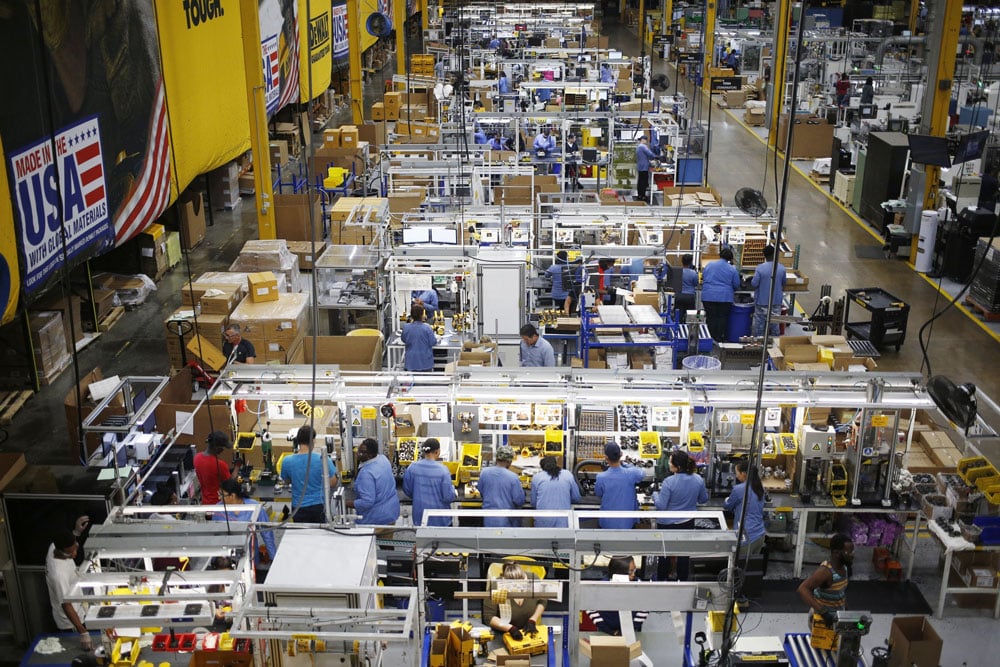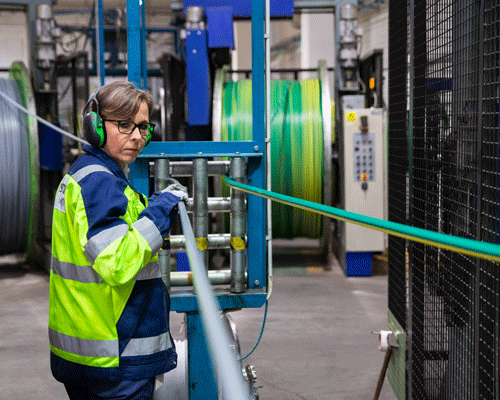Let’s be honest—our approach to retaining entry-level workers earning $15-$20 an hour isn’t working. Across manufacturing and warehouse facilities, turnover is through the roof, and it’s wreaking havoc on production.
According to recent U.S. Bureau of Labor Statistics figures, warehouse worker turnover rate was 49%. Nearly half of all warehouse associates left their jobs. (It’s three times higher at Amazon, which turns over warehouse employees at a rate of roughly 150% per year).
So, what’s the solution? We need to rethink how we hire, schedule, and manage these workers.
The fact is, the way we’ve managing workers for the last 50 years doesn’t work anymore. The old model—expecting 10 people to work rigid 40-hour weeks with mandatory OT without fail—is over. We need to look at today’s workforce and figure out how to adapt if we want to survive.
The Numbers Don’t Lie: Rigid Scheduling is Driving Workers Away
The data is clear: entry-level worker turnover in manufacturing and warehouse environments is at historic levels.
For some of you, turnover is sitting above 100% year-over-year. Think about that for a minute. That means for every 100 entry-level workers you hire, you’re losing 120 within the same year. And it’s not just a headache for HR. It affects the entire operation, from production schedules to training budgets.
When workers leave faster than you can hire, the entire business suffers. Training costs pile up, production slows, and managers spend more time putting out fires than focusing on growth. High turnover also impacts team morale. Employees who stick around see their coworkers disappear every few months, which makes them wonder if they should jump ship too.
Flexible Schedules in Manufacturing & Warehouse Facilities in 2025
The reality is that today’s workforce isn’t interested in the traditional 40-hour schedule, the mandatory overtime, or even your retirement plans. Hourly workers, especially those making $15-$20 an hour, value schedule flexibility above everything else. They have lives outside of work—family, school, second jobs—and they need an employer who gets that.
The solution is flexible scheduling. Rather than forcing 10 people into a rigid 40-hour workweek, hire 14 people to work 32 hours each. This way, you’re giving workers what they want, while still covering your shifts. And guess what? The average full-time worker these days isn’t clocking 40 hours anyway. Many are already averaging only 32 hours a week due to personal commitments, burnout, or other issues. So why not plan for that?
By embracing flexible scheduling, you can reduce burnout, improve retention, and ensure that you have enough people to cover every shift. Flexible scheduling models don’t just benefit your workers—they benefit your business too.
So, what’s the root cause of all this churn? It’s the way we’re managing our workforce. Specifically, rigid scheduling models that fail to meet the needs of today’s workers.
How Flexible Schedules & Shift Coverage Works
One of the biggest challenges in any manufacturing or warehouse environment is ensuring 100% shift coverage. Production lines can’t stop, and there’s no room for gaps in staffing. The key is to have a dedicated backup pool of workers who are already trained and familiar with your facility to fill in for a worker that can’t make their shift.
When you allow workers to backfill for each other, you open up a whole new world of possibilities. Workers can trade shifts or pick up extra hours when they need them, and managers don’t have to scramble to fill shifts last minute. The result? No more gaps in coverage and a more reliable workforce overall.
Let me be clear: flexible scheduling isn’t about letting workers come and go as they please. It’s about designing schedules that work for both the business and the employee. When done right, flexible scheduling can actually increase worker accountability because it gives employees more control over their schedules, making them more invested in showing up and performing well.
Redefining What it Means to be a Good Worker
We need to stop measuring a worker’s value by how many hours they work. The old idea that working 40+ hours without fail makes someone a “good worker” is outdated and harmful. In today’s workforce, the best workers aren’t the ones clocking the most hours—they’re the ones who are reliable, smart, and hard-working.
Reliability doesn’t mean working 40 hours a week. It means showing up when you say you will, performing at a high level, and supporting your team. And for a lot of workers, being able to work 32 hours some weeks—actually makes them more reliable. They’re less likely to burn out, more likely to stay engaged, and more committed to the job because it works with their life.
The Hidden Costs of Turnover
Every time an employee walks out the door, it costs your business. And I’m not just talking about the obvious expenses like recruitment and training. Turnover hits your bottom line in ways you might not even realize.
When you lose an entry-level worker, you lose time.
Managers have to shift their focus from running operations to finding and training a replacement. Team productivity and quality dips because the new hire isn’t fully up to speed. And if turnover is high, this cycle repeats over and over again, creating a constant drag on your team’s ability to perform at its best.
You also lose knowledge.
Every worker who leaves takes with them the experience they’ve gained on the job, leaving you with a less experienced workforce overall. And the more often this happens, the harder it becomes to maintain a skilled, efficient team.
We all know the average age of your workforce is getting older and closer to retirement. Then what? Who runs that piece of equipment that Frank operated for 30 years? Once these skilled workers leave, you have to start over and pray that the new employee can figure it out. That’s a recipe for disaster.
Turnover affects your culture.
When workers see their colleagues leaving in droves, it creates a sense of instability. Even your most loyal employees start to wonder if they should be looking for the door. And when culture suffers, so does retention.
We’ve also seen facilities suffer from a bad reputation throughout an entire local community. They become known as the site that nobody wants to work at because the shifts are too long, and the schedules are too difficult to keep up.
The good news is, all of this is avoidable. By modernizing your workforce strategy and offering flexible scheduling, you can significantly reduce turnover and build a more stable, engaged workforce.
Implementing a Flexible Workforce Strategy in 2025
So, how do you implement a flexible workforce strategy? It’s not as complicated as you might think. Here are a few steps to get started:
- Reevaluate Your Scheduling Model – Take a look at how you’re currently scheduling your workforce. Are you still operating under the assumption that every worker should be logging 40+ hours a week? If so, it’s time to rethink that. Consider hiring more workers for fewer hours. For example, instead of relying on 10 full-time workers to cover your shifts, hire 14 workers to average 32 hours each (some will clock more than 40 and some will clock 24). This gives you more coverage and reduces the risk of burnout among your workers.
- Allow for Shift Backfilling – One of the best ways to ensure full coverage is to allow workers to backfill shifts for each other. Create a system where workers can easily trade or cover shifts. This not only helps fill gaps in coverage but also gives workers the flexibility they need to manage their schedules.
- Promote Flexibility as a Key Benefit – When recruiting new workers, make flexibility a selling point. Workers today, especially entry-level employees, value flexibility more than ever. If you’re offering a flexible work environment, make sure you’re highlighting that in your job postings and recruitment efforts.
- Invest in Workforce Management Tools – To make flexible scheduling work, you need to have the right tools in place. Workforce management software can help you track schedules, manage shift swaps, and ensure full coverage without the headache of manual scheduling.
- Train Managers on Flexibility – Flexibility works best when managers are on-board and know how to manage it effectively. Train your management team on how to create schedules that work for both the business and the employee. Teach them how to handle shift swaps, communicate expectations, and hold employees accountable in a flexible work environment.
Adapting to Today’s Workforce Expectations
If the old ways of scheduling and workforce management aren’t cutting it anymore, now’s the time to adapt.
The choice is yours—continue struggling with high turnover or embrace a new approach and start building a workforce that sticks around.
Flexible scheduling, over-hiring, and technology—across your workforce isn’t just a solution for today’s problems. It’s the future of workforce management.
You’ll be ahead of the competition, offering jobs that are more attractive than gig work, with flexibility and consistent earnings. And in a market where workers have options, that’s how you win. You’ll find that the workers who stick around aren’t just there for a paycheck—they’re engaged, reliable, and more likely to develop into long-term team members and leaders.
This is the ultimate payoff: a workforce that doesn’t just meet today’s needs but sets your company up for future success.
Frequently Asked Questions (FAQ)
Why is turnover so high in manufacturing?
Turnover in manufacturing is high because many companies are stuck using rigid schedules and outdated workforce models that don’t meet the needs of today’s workers. Today’s workers value flexibility over the traditional 40-hour workweek.
How does flexible scheduling improve retention?
Flexible scheduling aligns work with employees’ lives, reducing burnout and increasing loyalty. Workers stay longer because they feel supported and have control over their schedules.
What is the impact of backfilling shifts?
Backfilling ensures 100% shift coverage, reducing production delays and gaps in staffing. It allows workers to swap or cover shifts, which increases flexibility and reduces burnout.
How do flexible work models reduce costs?
By reducing turnover and increasing worker satisfaction, companies spend less on recruiting, training, and managing unfilled shifts. This keeps operations running smoothly without extra financial investment.
How to retain entry-level workers?
To retain entry-level workers, focus on providing flexible scheduling, offering competitive wages, and creating opportunities for growth and development. Flexibility allows employees to manage their work-life balance, reducing burnout and improving job satisfaction. Recognizing and rewarding performance, offering clear career progression, and fostering a positive workplace culture also play critical roles in increasing retention.







Share